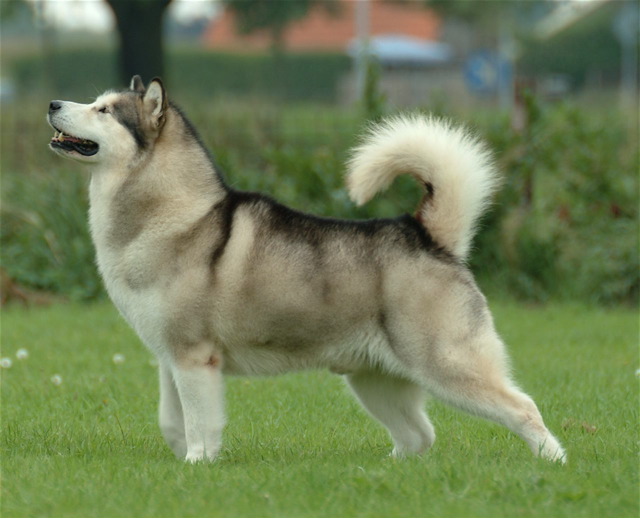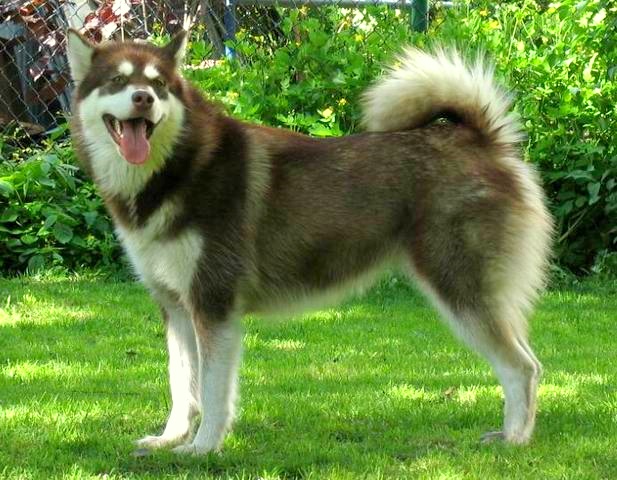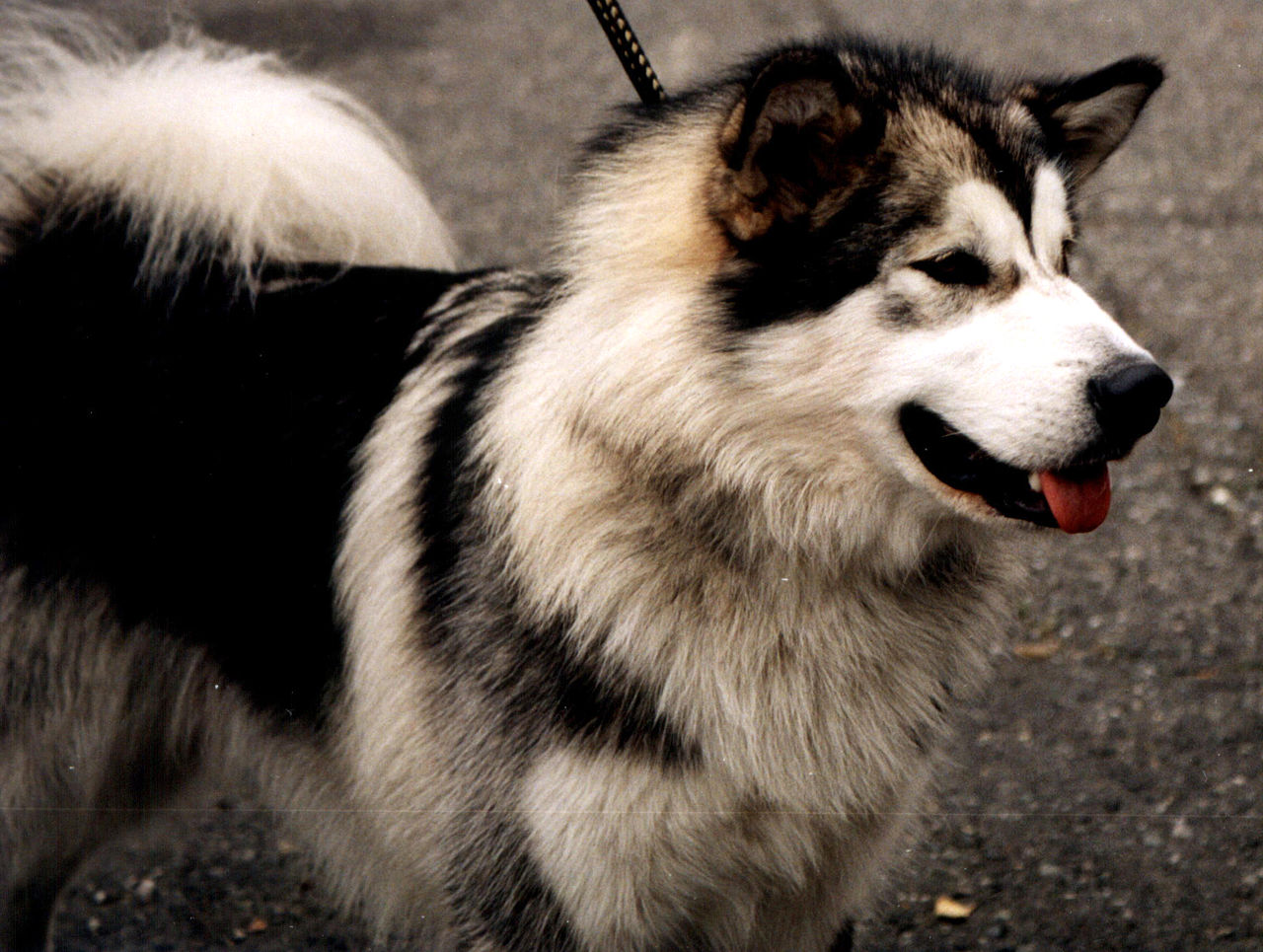
Alaskan Malamutes are one of the oldest and most powerful Arctic sled dogs. Renowned for their strength, endurance, and friendly demeanor, these majestic animals have a rich history intertwined with the indigenous people of Alaska.
This guide will explore every aspect of Alaskan Malamutes, from their origins to their care needs.
History of the Alaskan Malamute
The history of Alaskan Malamutes dates back thousands of years. These dogs were originally bred by the Mahlemut tribe, native to Alaska. The tribe relied on these dogs for their impressive strength and stamina to pull heavy sleds across long distances in harsh Arctic conditions. Over time, Alaskan Malamutes have retained many of their original characteristics, making them a direct link to the past.
Physical Characteristics of Alaskan Malamutes
Alaskan Malamutes are easily recognizable by their robust build and thick double coat. Males typically weigh between 85 and 100 pounds, while females are slightly lighter, weighing between 75 and 85 pounds. Their coat colors range from light gray to black, sable, and shades of red, always paired with white markings. Their expressive eyes, which are usually brown, and erect ears add to their wolf-like appearance.
Temperament and Personality of Alaskan Malamutes
The temperament and personality of Alaskan Malamutes are defined by their friendly and outgoing nature. These dogs are known for their loyalty and affectionate disposition. They thrive on human companionship and are excellent family pets. However, due to their pack-oriented nature, they require strong leadership and consistent training to prevent behavioral issues.
Alaskan Malamutes and Exercise Needs
Alaskan Malamutes have high exercise needs due to their working dog heritage. They require at least an hour of vigorous exercise daily to maintain their physical and mental health. Activities such as hiking, running, and sled pulling are ideal for these active dogs. Without sufficient exercise, Alaskan Malamutes can become bored and destructive.
Grooming and Coat Care for Alaskan Malamutes
Grooming and coat care for Alaskan Malamutes are essential to keep their dense fur in good condition. They shed heavily twice a year, during which daily brushing is necessary to manage the shedding. Regular grooming sessions also help to prevent matting and keep their skin healthy. Bathing should be done occasionally, as frequent baths can strip the coat of natural oils.

Alaskan Malamutes and Their Dietary Requirements
Alaskan Malamutes have specific dietary requirements to support their energy levels and overall health. A balanced diet rich in high-quality proteins, fats, and carbohydrates is crucial. Owners should consult with a veterinarian to determine the best feeding plan, taking into account the dog's age, weight, and activity level. Fresh water should always be available.
Training Alaskan Malamutes
Training Alaskan Malamutes can be a rewarding but challenging task. These dogs are intelligent and independent, which can sometimes translate into stubbornness. Positive reinforcement methods, such as treats and praise, are most effective. Consistent training sessions starting from a young age are key to fostering obedience and good behavior.
Socialization of Alaskan Malamutes
Socialization of Alaskan Malamutes is vital to ensure they grow into well-rounded adults. Exposing them to various environments, people, and other animals from an early age helps prevent fearfulness and aggression. Well-socialized Malamutes are more adaptable and easier to handle in different situations.
Health Concerns in Alaskan Malamutes
Like all breeds, Alaskan Malamutes are prone to certain health issues. Common health concerns include hip dysplasia, hypothyroidism, and eye conditions such as cataracts. Regular veterinary check-ups and a healthy lifestyle can help mitigate some of these risks. Being aware of the breed's health predispositions allows owners to take proactive measures.
Alaskan Malamutes in Different Living Environments
Alaskan Malamutes can adapt to various living environments, but they thrive best in homes with ample space and access to outdoor areas. They are not well-suited for apartment living due to their size and exercise needs. A home with a securely fenced yard provides them with the space to play and explore safely.
Alaskan Malamutes and Their Interaction with Children
Alaskan Malamutes are known for their gentle and patient nature, making them great companions for children. However, due to their size and strength, supervision is necessary during interactions to prevent accidental injuries. Teaching children how to properly interact with dogs helps foster a safe and positive relationship.

The Working Capabilities of Alaskan Malamutes
The working capabilities of Alaskan Malamutes are impressive, given their heritage as sled dogs. They excel in activities that involve pulling and carrying heavy loads. Today, many Malamutes participate in dog sports such as weight pulling, carting, and mushing, which showcase their strength and endurance.
Alaskan Malamutes and Their Lifespan
The lifespan of Alaskan Malamutes typically ranges from 10 to 14 years. Proper care, a balanced diet, regular exercise, and routine veterinary visits can contribute to a longer, healthier life. Awareness of the breed's common health issues and early intervention are crucial in managing their overall well-being.
Adopting an Alaskan Malamute
Adopting an Alaskan Malamute can be a rewarding experience. Prospective owners should research and consider adopting from reputable breeders or rescue organizations. It's essential to understand the breed's needs and ensure a good match with the family's lifestyle and capabilities. Adoption provides a loving home to a dog in need and can be a fulfilling journey for both the pet and the owner.
Alaskan Malamutes and Their Role in Popular Culture
Alaskan Malamutes have made their mark in popular culture, often depicted as heroic and loyal companions. Their striking appearance and powerful presence have earned them roles in movies, television shows, and literature. These portrayals have contributed to the breed's popularity and recognition worldwide.
Common Misconceptions About Alaskan Malamutes
Common misconceptions about Alaskan Malamutes include beliefs that they are aggressive or difficult to train. In reality, Malamutes are typically friendly and affectionate. Their independent nature can be mistaken for stubbornness, but with proper training and socialization, they make excellent pets. Educating the public about the breed's true characteristics helps dispel these myths.
Breeding and Raising Alaskan Malamutes
Breeding and raising Alaskan Malamutes require knowledge and commitment. Responsible breeders prioritize health, temperament, and breed standards. Raising Malamute puppies involves early socialization, consistent training, and meeting their nutritional and exercise needs. Prospective breeders should work closely with veterinarians and experienced mentors.
Rescue Organizations for Alaskan Malamutes
Several rescue organizations are dedicated to helping Alaskan Malamutes in need. These organizations provide shelter, medical care, and rehoming services for abandoned or surrendered Malamutes. Supporting these rescues through donations, volunteering, or adopting a rescue dog helps ensure a better future for these majestic animals.
Alaskan Malamutes and Their Interaction with Other Pets
Alaskan Malamutes can coexist peacefully with other pets, particularly if they are introduced and socialized from a young age. Their strong prey drive means they may not be suitable for homes with small animals like cats or rabbits. However, with proper training and supervision, they can develop harmonious relationships with other dogs and larger pets.
The Future of Alaskan Malamutes
The future of Alaskan Malamutes depends on responsible breeding, continued public education, and advocacy for the breed. As awareness of their unique characteristics and needs grows, more people can appreciate and provide suitable homes for these incredible dogs. The breed's legacy as loyal companions and working dogs will continue to thrive with the right support.
In conclusion, Alaskan Malamutes make great pets for those who understand and can meet their needs. Their friendly nature, loyalty, and impressive capabilities make them wonderful companions. With proper care, training, and socialization, Alaskan Malamutes can bring joy and adventure to any household, continuing their legacy as one of the most beloved dog breeds in the world.


